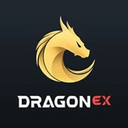- This is a group of nodes that manage the activity of Zilliqa’s framework. We can divide their role into two main parts: Building the general consensus (the Zilliqa general blockchain) and maintenance of the Zilliqa framework.
- As we mentioned before, each shard is only aware of the transactions that were assigned to it. After some shard has finished creating a new block it is sent to the DS Committee. The DS Committee needs to decide whether to add this block to the general blockchain. This done by executing another process of the PBFT consensus protoco















